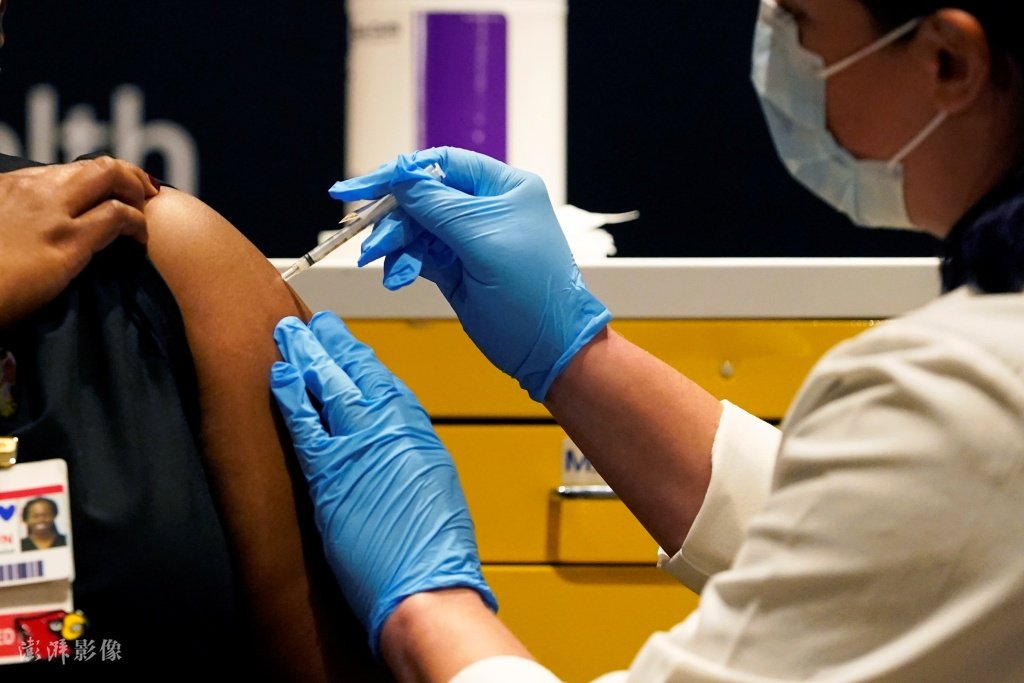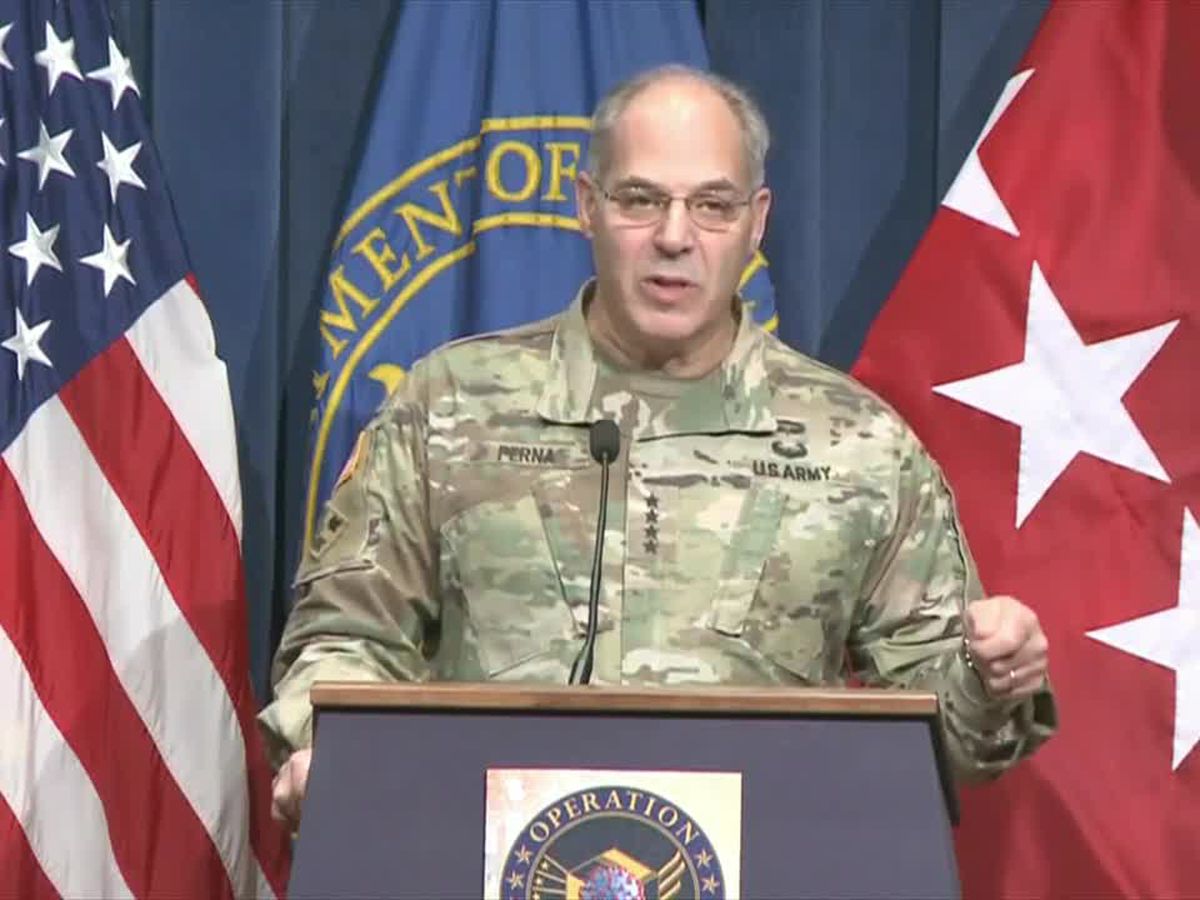At present, the United States has recently urgently authorized two vaccines to join the battle against the epidemic. However, the number of vaccines obtained by the states is lagging behind the previous number promised by the federal government, which reached 3 million doses.
In response, Gen. Gustavo Perna, who is responsible for the entire Trump vaccine development and distribution of Operation Warp program. Gustave Perna) apologized on December 19, saying that it was due to “not communicating well”.

According to the website of American politicians on December 19, Perner apologized many times at an online press conference that day that he had previously given promised figures based on the dose of the vaccine that had been prepared, and stressed that the resulting gap was his “personal mistake”.
Perner said: “I am the one who approves the (dose) prediction table. I approved the allocation (the plan). There was no problem with the process, no problem with Pfizer, and no problem with Modena. I failed, I adjusted, I was solving the problem, and then we will continue to move forward.”
Perner later apologized: “This is a planned mistake, and I am responsible for it. We are learning from it, and we are getting better and better… If this disrupts your (governor) decision, please accept my personal apology.”
But Perner said he was not clear about the “exact” time of distribution of all available vaccines. The newly approved Modena vaccine will be shipped on December 20th local time, and by the first week of January next year, he will deliver a total of about 20 million doses of vaccine to the states. Hopefully the vaccine distribution system will work ‘perfectly’.”
The U.S. Department of Health and Human Services said that considering that the vaccine must be tested aseptic and other tests, there may be differences between the dose produced and the dose actually intended for distribution.
The so-called “Operation Warp” is an action launched by the U.S. government in May this year to accelerate the development of vaccines and achieve large-scale manufacturing and distribution through cooperation between the government and private capital. The project budget is about $10 billion, involving multiple government agencies and private enterprises.
Initially, Perner’s “Operation Warp” promised 7.3 million doses of vaccines distributed in the second week, but now only 4.3 million doses are prepared, and the gap reaches 3 million doses. This week, multi-state governors have issued a statement expressing dissatisfaction with the vaccine distribution plan of Operation Warp.
Last week, more than 10 states were notified by the federal side that they expected to receive a reduction in the dose of the Pfizer vaccine next week, but did not explain why. Although some states did not explicitly say the reduced dose, California said that the dose would be received 160,000 less than expected, while Michigan said it would be 25,000 doses less.
Maine officials, who expect the number of vaccinations next week will be 40% less than expected, and they have said that they will delay the vaccination of people, paraly assisted living care institutions and staff in some residential care institutions.
On December 17, the Ministry of Health released data on Pfizer’s first vaccine distribution. The distribution of doses is determined by the population of each state, with California and Texas receiving the most total doses, followed by Florida, New York and Illinois.
On average, one in five healthcare workers are eligible for the first phase vaccine dose, according to the delivery tracked by CBS. For example, 16 percent of California’s 2 million healthcare workers are able to receive 327,600 doses of Pfizer vaccine that were initially received by the state government.

But overall, the gap in vaccine distribution still makes many state governors express dissatisfaction. Washington Governor Jay Inslee tweeted on December 17: “This is destructive and frustrating. We need accurate, predictable data to plan and ensure success on the ground.”
Michigan Governor Gretchen Whitmer said that the White House was “slowing down the process”.
Previously, Pfizer said that it expected to produce 100 million doses of vaccines within this year, but then announced that it would reduce production to 50 million doses, and promised that the United States would get 20 million doses of vaccine by the end of this year. The U.S. Department of Health said this week that Pfizer currently has 7 million doses of vaccines, of which 2 million will be distributed next week, 500,000 will be used for reserve, and 4.9 million doses remain for a second dose.
However, the department also stressed that everything is “waiting for final confirmation”.
On December 11th local time, the U.S. Food and Drug Administration (FDA) urgently approved the coronavirus vaccine developed by Pfizer and BioNTech in Germany. On the 14th, the first round of large-scale vaccination of this vaccine was officially launched in the United States. However, since then, the status of vaccination has been frequent.
According to CBS, two medical staff in the UK had serious adverse reactions after being vaccinated against Pfizer on the 8th. Health officials in the UK have warned that people with a history of “serious” allergic reactions to vaccines, drugs, or food should not be injected with Pfizer’s coronavirus vaccine.
So far, three cases of allergic reactions have been reported in the United States. Two health care workers at an Alaska hospital developed an allergic reaction after being vaccinated. One employee had a previous history of allergy and had a severe allergic reaction; another employee had a less severe allergic reaction. A second severe reaction was reported at another Alaska hospital later this week. All three were treated and soon recovered.
Just one day later, the vaccination plan was exposed to a new situation. Perner said on the same day that 3,000 doses of Pfizer vaccine were quarantined and sent back to manufacturers due to the low storage temperature during transportation.
According to the real-time data of Johns Hopkins University in the United States, as of 6:27 Beijing time on December 20, the cumulative number of confirmed cases of COVID-19 in the United States has reached 1,7592,999, with a total of 315,312 deaths. Compared with 5:27 the previous day, there were 202,754 new confirmed cases and 2,467 new deaths in the United States.



